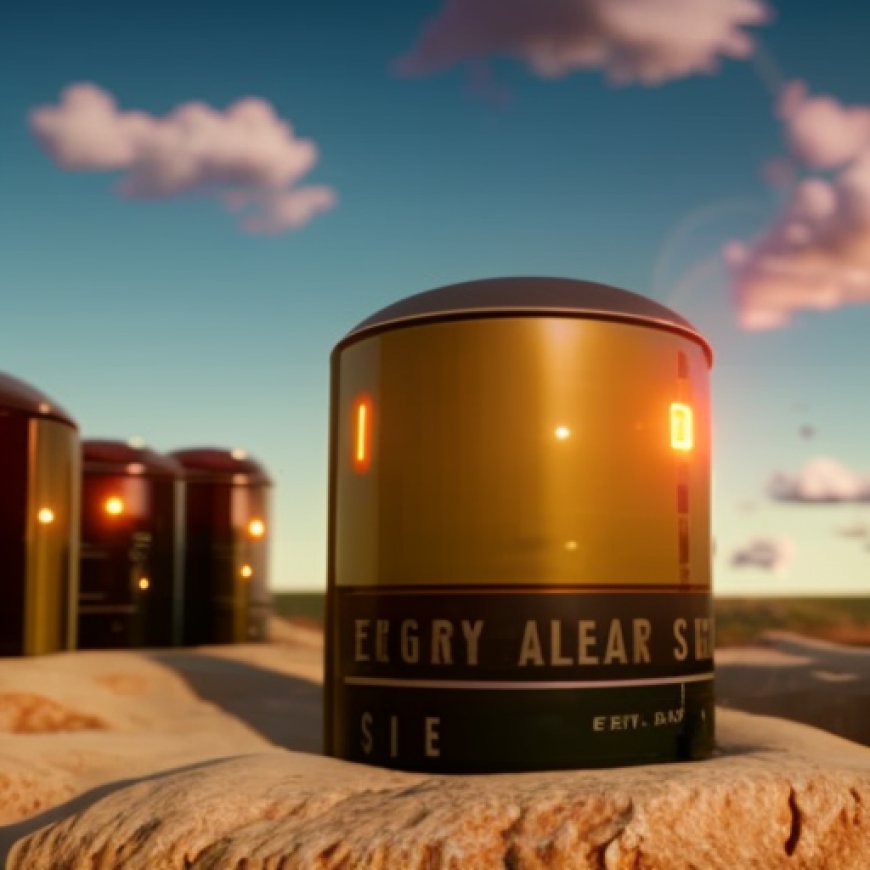From Disused Mines to Energy Powerhouses: The Impact of Compressed Air Energy Storage
From Disused Mines to Energy Powerhouses: The Impact of ... EnergyPortal.eu



Transforming Disused Mines into Compressed Air Energy Storage Powerhouses: A Revolutionary Approach to Energy Conservation
The global energy landscape is undergoing a significant transformation, with a marked shift towards renewable energy sources. As the world grapples with the pressing need to combat climate change, innovative solutions are emerging to address the challenges of energy storage and distribution. One such solution is the utilization of disused mines for compressed air energy storage (CAES), a revolutionary approach that is set to redefine the dynamics of energy conservation.
Compressed air energy storage is a method that involves storing energy in the form of compressed air in underground reservoirs. During periods of low energy demand, excess electricity from the grid is used to compress air, which is then stored in an underground reservoir. When energy demand peaks, the stored air is released, driving a turbine to generate electricity. This process offers a sustainable and efficient way to store energy, particularly from intermittent renewable sources such as wind and solar.
The use of disused mines for CAES presents a unique opportunity to repurpose these often problematic sites. Abandoned mines pose environmental and safety risks, and their remediation is a costly and complex process. However, their transformation into CAES facilities not only mitigates these risks but also contributes to the broader energy transition. The deep, extensive caverns of these mines provide an ideal environment for the storage of compressed air, offering a practical and cost-effective solution to the challenge of large-scale energy storage.
The Sustainable Development Goals (SDGs)
- Goal 7: Affordable and Clean Energy
- Goal 9: Industry, Innovation, and Infrastructure
- Goal 11: Sustainable Cities and Communities
- Goal 13: Climate Action
The impact of this innovative approach is far-reaching. Firstly, it promotes the integration of renewable energy into the grid by providing a reliable storage solution. This not only enhances the stability of the grid but also facilitates the shift towards a low-carbon economy. Secondly, it revitalizes disused mines, transforming them from environmental liabilities into assets that contribute to energy security and local economic development.
Projects Demonstrating the Potential
- In Germany, a former iron mine is being converted into a CAES facility, which is expected to store enough energy to power 400,000 homes.
- In the United States, a project in Ohio is exploring the feasibility of using a retired limestone mine for a similar purpose.
These initiatives not only highlight the viability of CAES in disused mines but also underscore its potential to contribute significantly to energy conservation and climate change mitigation.
Despite the promising prospects, the implementation of CAES in disused mines is not without challenges. These include technical issues related to the integrity of the mine structures, regulatory hurdles, and the need for substantial upfront investment. However, with continued research and development, these challenges can be overcome, paving the way for the wider adoption of this innovative energy storage solution.
In conclusion, the transformation of disused mines into compressed air energy storage powerhouses represents a revolutionary approach to energy conservation. It not only addresses the pressing need for large-scale energy storage but also turns environmental liabilities into assets, contributing to a sustainable and resilient energy future. As the world continues to transition towards renewable energy, such innovative solutions will play a pivotal role in shaping the global energy landscape.
SDGs, Targets, and Indicators
1. Sustainable Development Goal: Affordable and Clean Energy (SDG 7)
- Target 7.1: By 2030, ensure universal access to affordable, reliable, and modern energy services.
- Indicator 7.1.2: Proportion of population with primary reliance on clean fuels and technology.
The article addresses SDG 7 by discussing the utilization of disused mines for compressed air energy storage (CAES), which is a form of affordable and clean energy storage. This approach contributes to the goal of ensuring universal access to affordable and modern energy services.
2. Sustainable Development Goal: Industry, Innovation, and Infrastructure (SDG 9)
- Target 9.4: By 2030, upgrade infrastructure and retrofit industries to make them sustainable, with increased resource-use efficiency and greater adoption of clean and environmentally sound technologies and industrial processes.
- Indicator 9.4.1: CO2 emission per unit of value added.
The article connects to SDG 9 by highlighting how the transformation of disused mines into CAES facilities contributes to upgrading infrastructure and retrofitting industries for sustainability. This approach utilizes clean and environmentally sound technologies for energy storage, reducing CO2 emissions per unit of value added.
3. Sustainable Development Goal: Climate Action (SDG 13)
- Target 13.2: Integrate climate change measures into national policies, strategies, and planning.
- Indicator 13.2.1: Number of countries that have integrated mitigation, adaptation, impact reduction, and early warning into primary, secondary, and tertiary curricula.
The article relates to SDG 13 by emphasizing how the utilization of disused mines for CAES contributes to climate action. By integrating renewable energy storage solutions like CAES into national energy policies and strategies, countries can mitigate the impacts of climate change and reduce greenhouse gas emissions.
Table: SDGs, Targets, and Indicators
| SDGs | Targets | Indicators |
|---|---|---|
| SDG 7: Affordable and Clean Energy | Target 7.1: By 2030, ensure universal access to affordable, reliable, and modern energy services. | Indicator 7.1.2: Proportion of population with primary reliance on clean fuels and technology. |
| SDG 9: Industry, Innovation, and Infrastructure | Target 9.4: By 2030, upgrade infrastructure and retrofit industries to make them sustainable, with increased resource-use efficiency and greater adoption of clean and environmentally sound technologies and industrial processes. | Indicator 9.4.1: CO2 emission per unit of value added. |
| SDG 13: Climate Action | Target 13.2: Integrate climate change measures into national policies, strategies, and planning. | Indicator 13.2.1: Number of countries that have integrated mitigation, adaptation, impact reduction, and early warning into primary, secondary, and tertiary curricula. |
Overall, the article highlights the connection between the utilization of disused mines for compressed air energy storage and the Sustainable Development Goals. It addresses SDG 7 (Affordable and Clean Energy), SDG 9 (Industry, Innovation, and Infrastructure), and SDG 13 (Climate Action) by promoting affordable and clean energy access, sustainable infrastructure, and climate change mitigation. The targets and indicators identified in the article provide specific goals and measures to track progress towards these SDGs.
Behold! This splendid article springs forth from the wellspring of knowledge, shaped by a wondrous proprietary AI technology that delved into a vast ocean of data, illuminating the path towards the Sustainable Development Goals. Remember that all rights are reserved by SDG Investors LLC, empowering us to champion progress together.
Source: energyportal.eu

Join us, as fellow seekers of change, on a transformative journey at https://sdgtalks.ai/welcome, where you can become a member and actively contribute to shaping a brighter future.







